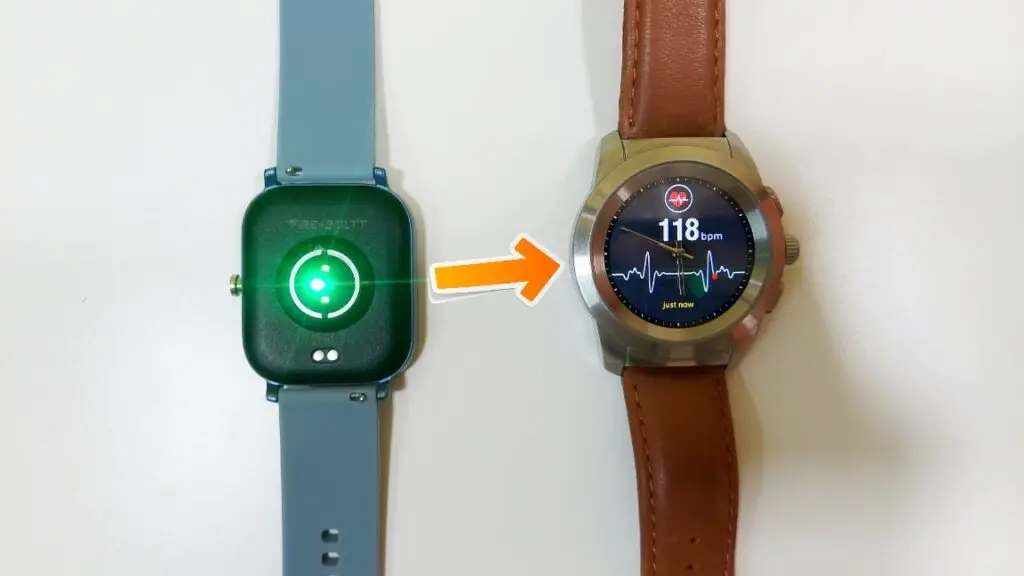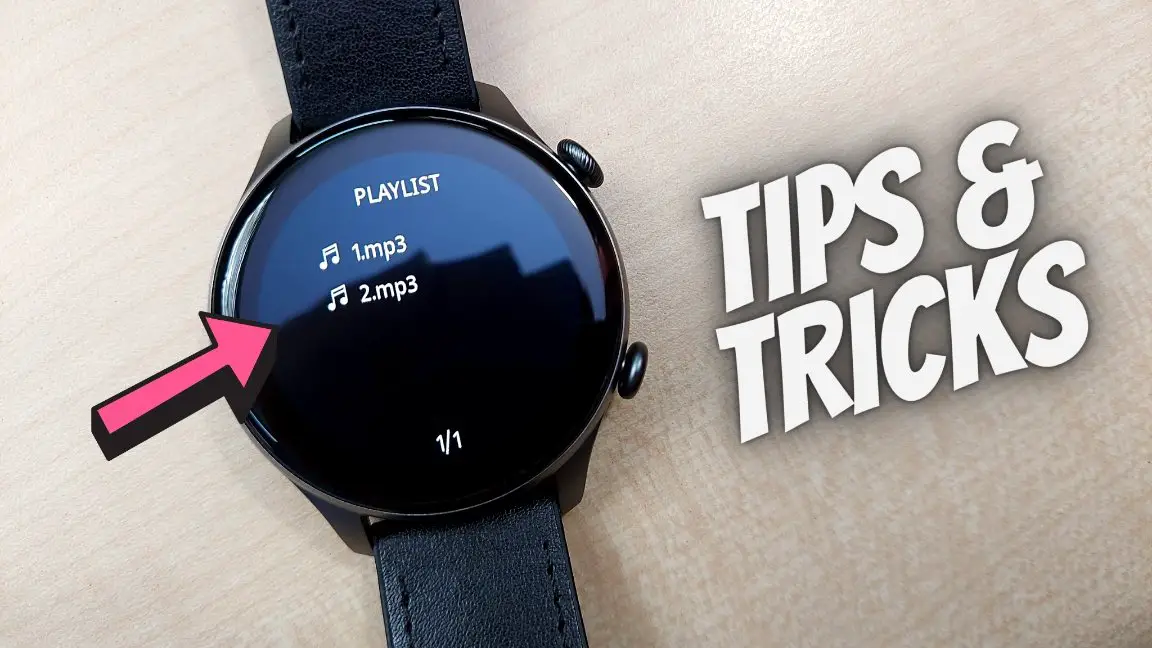A smartwatch or fitness band has several sensors to track your activities and gestures. Using a smartwatch, you can check your steps, calories, heart rate, distance, and more. But, do you know how that small smartwatch on your wrist tracks the motion and movements you make? Well, in this article, let’s see how a smartwatch detects motion, steps, or calories and which sensors are used in the process.
Related | Sleep Tracking- Is It Safe To Wear Smartwatch While Sleeping?
How a Smartwatch Detects Motions and Gestures?

Most smartwatches primarily use two sensors – an Accelerometer and a Gyroscope to detect motions and hand gestures. Yes, these are the same sensors that help with the Raise to Wake feature that lights up the screen when you turn the wrist up.
Some smartwatches also come with different gesture support to perform certain tasks. In which case, they have more optimized and tuned gesture sensors that can detect the gestures accurately.
Let’s now see how the accelerometer and gyroscope sensors detect motion or movement on a smartwatch or fitness tracker.
Accelerometer Sensor
An accelerometer sensor records your body movements forward and backward. It also senses the gravity changes, position, and rate of speed changes frequently. This is the most common sensor found in almost every smartwatch to detect body motion.
Gyroscope Sensor
A gyroscope sensor measures the body orientation and rotation. Smartwatches use this sensor to measure angular velocity and navigation to detect body movements. It can also detect gravity changes, which can help detect arm swings in smartwatches.
The 3-axis gyroscope and 3-axis accelerometer sensors combine to perform a 6-degree motion tracking system. The two sensors simultaneously track body movements, gravity, and speed to detect motion and gestures.
How a Smartwatch Detects or Counts Steps and Calories?

A smartwatch uses the accelerometer and gyroscope sensors and heart rate, and GPS (if present) to count steps and calories. Counting in all these factors, it shows the final data to you.
We’ve already discussed above how the two prominent sensors are used to track the body’s motion, gestures, and speed. Along with that, smartwatches use heart rate sensors to keep a tab on your body’s speed and momentum with the heartbeat rate.
If continuous heart rate monitoring is enabled on the watch, it will track the steps and calories more accurately. Most watches and fitness bands automatically enable heart rate to track data in sports or activity mode.

One more factor that affects the steps and calorie tracking in smartwatches is the built-in GPS. If GPS is present on your smartwatch, it will track your real-time location to measure the distance traveled accurately.
Using the distance data, it can show accurate readings of steps and calories based on your foot’s stride length. GPS smartwatches can calculate the stride length with the help of distance data. And when the stride length is present, they can calculate steps and calories more easily in lesser time.

All these sensors, including accelerometer and gyroscope, heart rate monitor, and GPS tracking, help a smartwatch to count the number of steps and calories.
Although only a few smartwatches come with built-in GPS. Smartwatches without GPS can also track this data but usually take more time and are less reliable. Here’s an in-depth guide on GPS in smartwatches and how it works.
How Accurate is Motion Detection in Smartwatches?

At times, you may wonder how accurately motion detection is in smartwatches? The answer to this question has two sides because it depends on the smartwatch you are using.
As we said, the basic sensors to detect motion and gestures are present in almost all smartwatches. But, the heart rate sensor and GPS tracking differ across the products. The heart rate sensor plays a major role, and it should be accurate enough to get close to actual results.

Since normal smartwatches use PPG sensors, they may show slightly inaccurate data. Whereas, some smartwatches by brands like Samsung, Fitbit, Garmin, and Apple are equipped with ECG sensors, which is said to be the most accurate heart sensor in smartwatches.
ECG smartwatches provide heart rate data and calculate steps and calories more accurately. Here’s more on what is ECG in smartwatches and how useful it is.
Also, not all smartwatches have built-in GPS, which is another way to track steps and calories accurately. It is normally found in expensive smartwatches, but nowadays, many fitness-oriented budget smartwatches also have this feature.
GPS tracks your location and distance traveled in real-time. Based on the data received, it uses the onboard algorithms to show steps and calorie count.

The conclusion is that you can rely on your smartwatch to detect motion, steps, and calorie tracking if it has an ECG sensor and built-in GPS. If your smartwatch doesn’t have ECG but built-in GPS is present, it can still be fairly reliable.
But note that steps racker, in general, aren’t 100 percent accurate. For instance, we have seen some watches count steps when traveling on a bus, car, or metro. Similarly, activities like using a hammer on nails may lead the watch to misinterpret it as walking.
Some bands also rely on the change in air pressure to detect steps. So, when you go higher in an elevator or ride a vehicle like a car that changes the pressure, it can mislead the tracker count and make it think you’re walking up the stairs.
Make Your Smartwatch Step Tracker More Accurate
While the accuracy generally depends upon the watch’s hardware and how efficiently the manufacturer has optimized it to differentiate and avoid false detections, you can follow certain tips to make the smartwatch or band detect your steps more accurately.
- Use Non-Dormant Hand: Your dominant hand (the one you use to do most tasks) will be more active throughout the day, say, stirring the curry or banging the nail on the wall. So, avoid wearing the watch on your dormant hand.
- Wear it tight: Wear the smartwatch or fitness tracker firmly so that it is not loose or hanging around. If the tracker is loose, it may also result in inaccurate readings for heart rate and blood oxygen.
- Manual vs. Automatic Detection: Some smartwatches or fitness trackers give you the option for automatically detecting activities. If the one you’re wearing tends to register normal activities into walking or running, consider turning off automatic detection.
- Calibrate Stride Length: Some watches from brands like Fitbit let you calibrate or manually enter the stride length. Go to a place you’re aware of the distance. Count your steps as you cover the distance. Then, divide the distance traveled by the number of steps taken to find your Stride Length.
Wrapping Up
This was all about how the smartwatch detects motion, steps, and calories. Besides discussing the sensors that work together to show you the calculated steps and calories, we also mentioned ways to make it work more accurately. Stay tuned with WearablesToUse for more informative articles!



